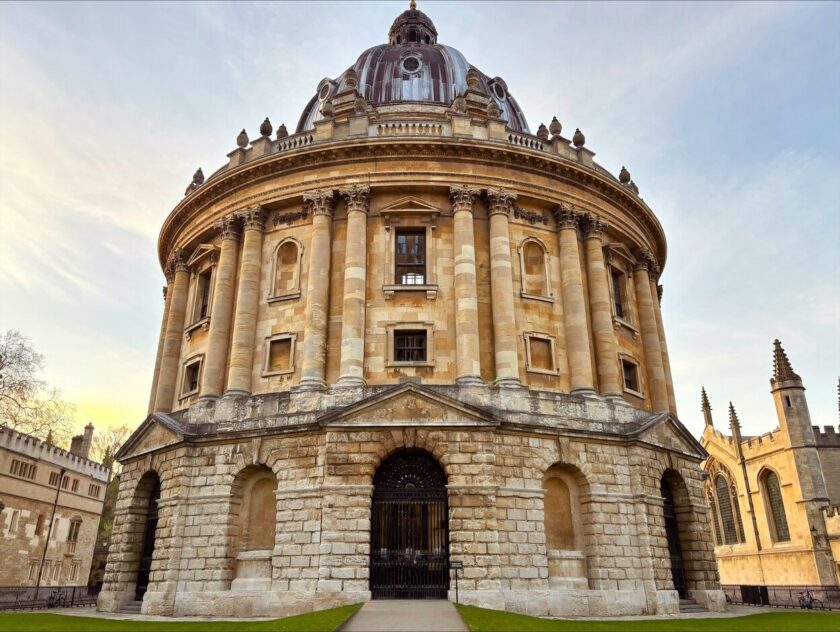
Known all around the world, it might seem like Oxford hardly needs another travel guide. But beyond the University colleges, what else does it have to offer the curious traveller?
Dating back to the 8th Century, Oxford is steeped in history and intrigue. Jam-packed with world-class attractions and exquisite architecture that’s enough to make your head spin.
As I’m sure all of you already know, Oxford stands as a beacon of academic excellence. The city even has a famous dictionary named after it. While the university and those associated with it draw visitors from all around the world to visit, there’s still a lot more about this city to discover…
So you get the most from your trip, I’ve scoured the city (on several occasions), and selected the highlights. These include big attractions as well as quirky gems to ensure you have the best time possible exploring Oxford.
Favourite attraction: The Bodleian Libraries

If there’s one guided tour that you should do in Oxford, make it the tour of the Bodleian Library. It’s worth it!
Joining a guided tour grants you access to rooms you wouldn’t be able to visit on your own unless you’re a university student. In addition to the tour are the wonderful guides who typically work as librarians at the Bodleian. They’ll bring the history of these places alive with lots of interesting tadbits and entertaining anecdotes.
There are three tours to choose from that last either 30, 60 or 90 minutes. Since the longest tour was fully booked, I opted for the 60 minutes tour. It went inside all the main rooms apart from the Radcliffe Camera. If you want to see inside this room, you’ll need to join the longest tour.
My tour took me inside the Duke Humfrey’s Library, the Divinity Room, the Convocation House and the University courtroom.
I think I’ll probably write a separate article about visiting the Bodleian Libraries because I loved it so much. Until I do, here’s a brief breakdown of the rooms I visited.
Duke Humfrey's Library

We began in the stunning Duke Humfrey’s Library, the University’s oldest reading room. Founded in 15th Century, it’s also one of the oldest in Europe.
Today, it’s still a working library that is open for students. However, unlike many libraries, it does not lend any books out. They are extremely old and precious. So much so, they used to be fixed to the bookcase with metal chains which all seems very medieval now.
Realising that heavily chains were damaging the books, most of the chains have now been carefully removed now. Look closely however, and you can see evidence of where they used to be.
Perhaps most famously, Duke Humfrey’s Library was catapulted onto the big screen when it was used as the Hogwart’s Library in the Harry Potter series!
The Convocation House
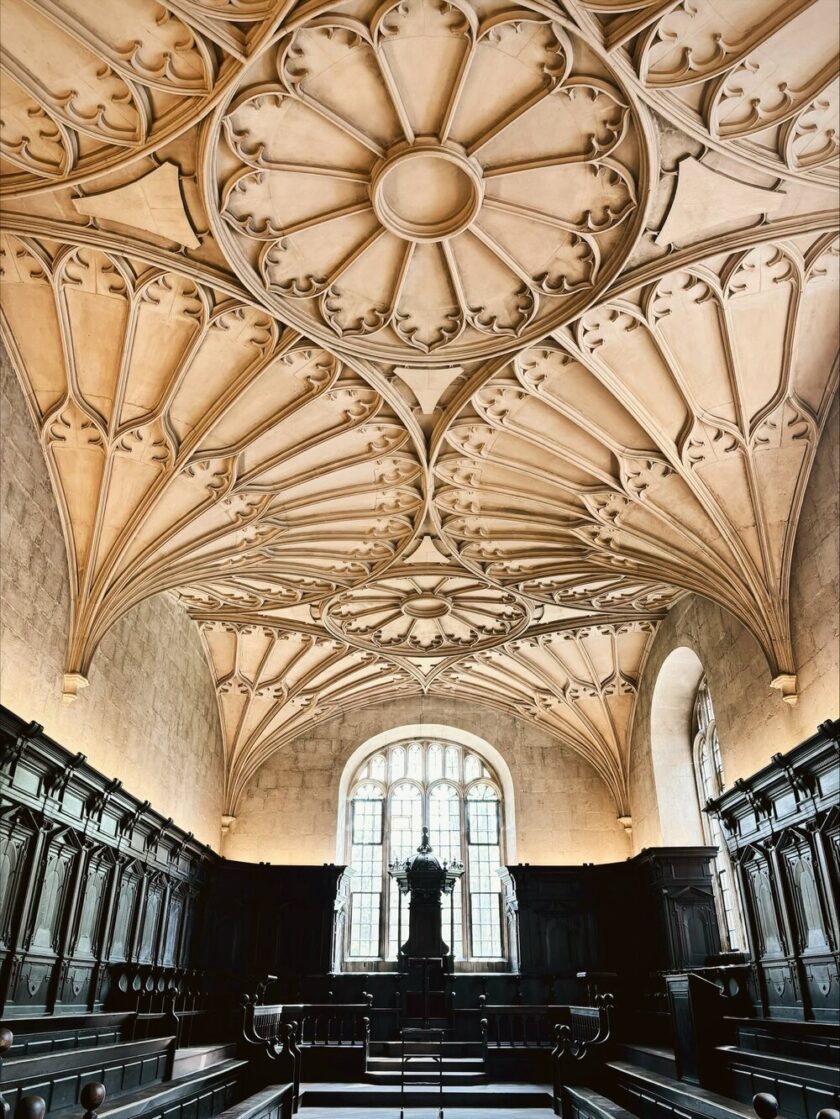
Next up we entered Convocation House which is an addition to the Bodleian Library and was built as a meeting place for the University’s governing body. In the past it has also served as a parliament chamber – which included during plague outbreaks. Those who had the financial means to flee London did so.
Little has changed about the room, making it easy to imagine a posse of posh old men getting into heated debates while donning silk-lined capes and gold-rimmed monocles.
Nowadays it is mainly used as a wedding venue, and you can see why with its stunning fan-vaulted ceiling.
The University's Courtroom
Next door to the Convocation House is a smaller room that was formerly the University’s courtroom. However, by the late 19th Century it lost many of its earlier powers and became chiefly a debt-recovery court, and was used frequently by Oxford shopkeepers and tradespeople to recoup money owed to them by students at the University.
Amusingly, one of the universities biggest culprits for skipping bills was none other than Oscar Wilde. You might be thinking that he forgot to pay the bill for items related to his studies like books and pencils, but far from it! Documents show that he owned large amount of money to local jewellers and tailors.
Instead of seeing his obvious wrong-doing, Wilde doubled down and wrote a letter to the University Commission, stating that these people needed to be investigated for corruption. In true fashion, he ended the letter ‘I trust that this monstrous claim will not be allowed to remain’ but it appears that his protests were to no avail. Hah!
The Divinity Room
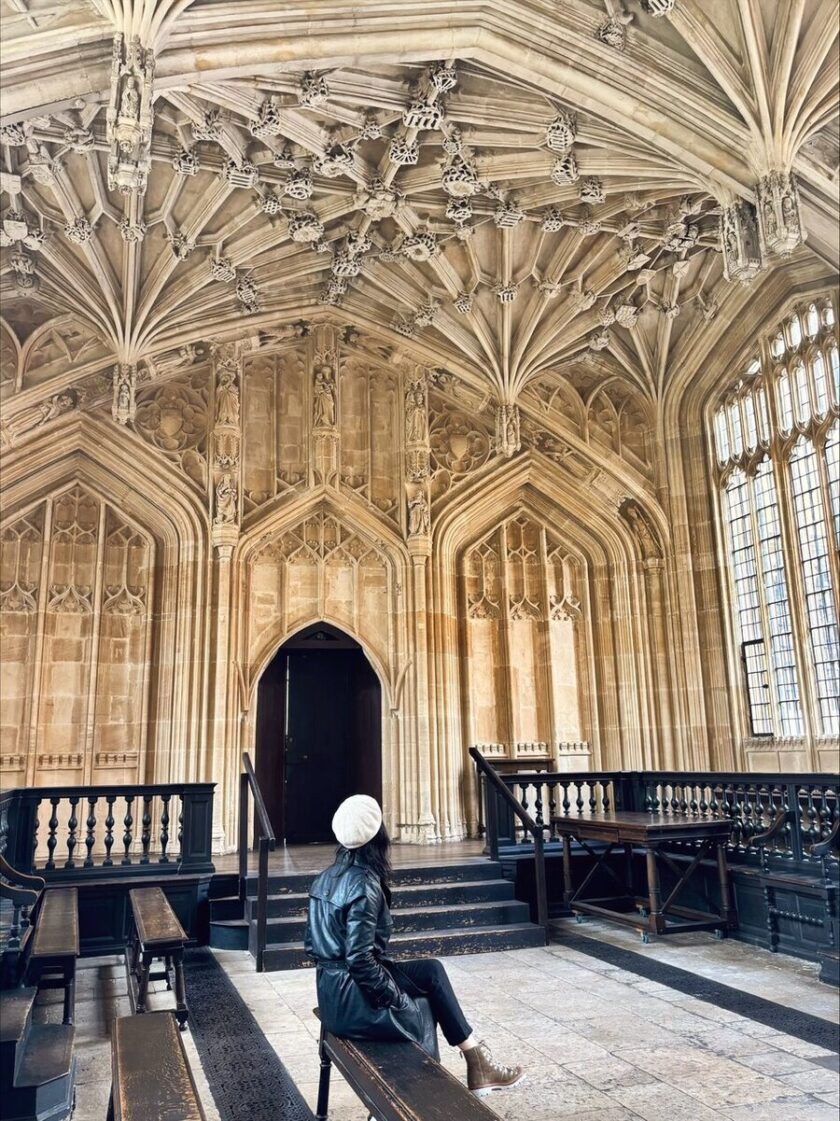
The last room I visited was the Divinity Room, formerly used for theological studies before it was given to the Bodleian Libraries in 1968.
The fan-vaulted ceiling, drenched in detail and architectural magnificence, really is a thing of beauty. The Divinity Room was built between 1427 and 1483. You might be wandering why it took so long to complete, well, to pull off something so detailed and elaborate took a painstakingly long time.
So long in fact, the university grew tired and impatient. Time and money became an issue which led to the master mason, Richard Winchcombe, being sacked and then replaced by Thomas Elkyn. He completed the rest of the room to a high standard, albeit in a simpler style, though you probably wouldn’t notice unless someone pointed it out.
Which colleges should you visit?
There’s something about exploring the stomping ground of great minds past and present that will leave you feeling both enlightened and inspired.
From scientists like Albert Einstein, Howard Florey and Stephen Hawking with their ground-breaking discoveries, to popular writers like J.R.R. Tolkien, C.S. Lewis and Aldous Huxley whose books have become staples of modern literature and going on to influence popular culture.
Among the good at Oxford, there were some rotten eggs too. Namely a number of Imperialist which history doesn’t view too fondly of now which is no surprise.
Like Cambridge, Oxford is a collegiate’ university. It comprises of 39 colleges and some of them are open to the public. You have to pay to visit them, and admission fees variy depending on the college.
Since it would be very expensive to see them all, I’ve selected three which I think are the most enjoyable to visit for different reasons.
Magdalen College - the prettiest
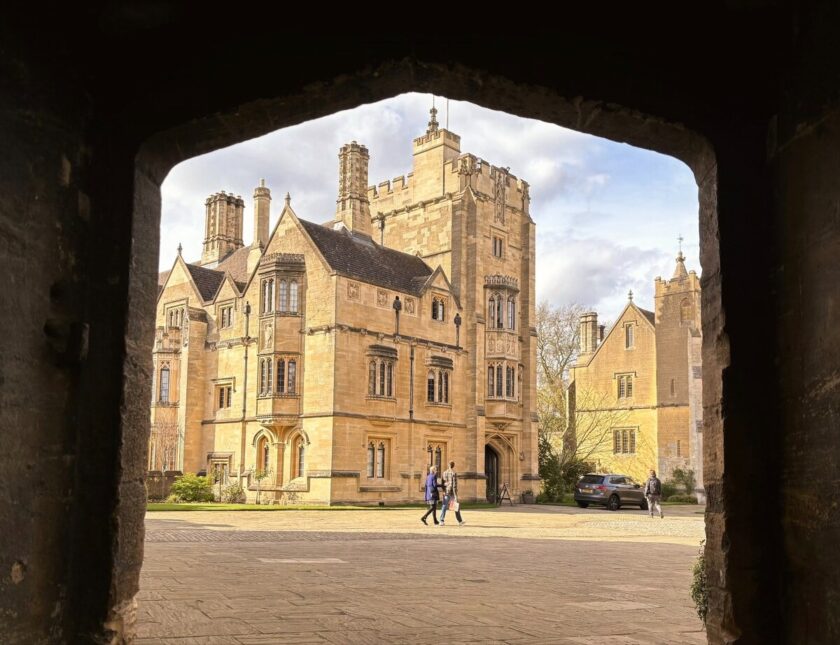
Just so you know, Magdalen College is pronounced “Mawdlen”, despite the spelling. I was super surprised when someone told me the correct pronunciation, especially after I had been pronouncing it wrong. Hah!
Known for its picturesque deer park and serene cloisters, Magdalen College offers visitors a tranquil escape from the crowds. Yes, there are really deer that roam the grounds. So pretty!
If you have time, I recommend a stroll along Addison’s Walk, a scenic path that winds along the banks of the River Cherwell and offers stunning views of the college’s grounds.
Christ Church College - most impressive

One of the largest and probably most famous college in Oxford is Christ Church. It boasts stunning architecture, including the iconic Tom Tower and the Great Hall, which served as the inspiration for the Hogwarts dining hall in the Harry Potter films.
Don’t miss the chance to explore the Christ Church Cathedral, which is located within the college and features beautiful stained glass windows and intricate medieval carvings.
Balliol College - most relaxing
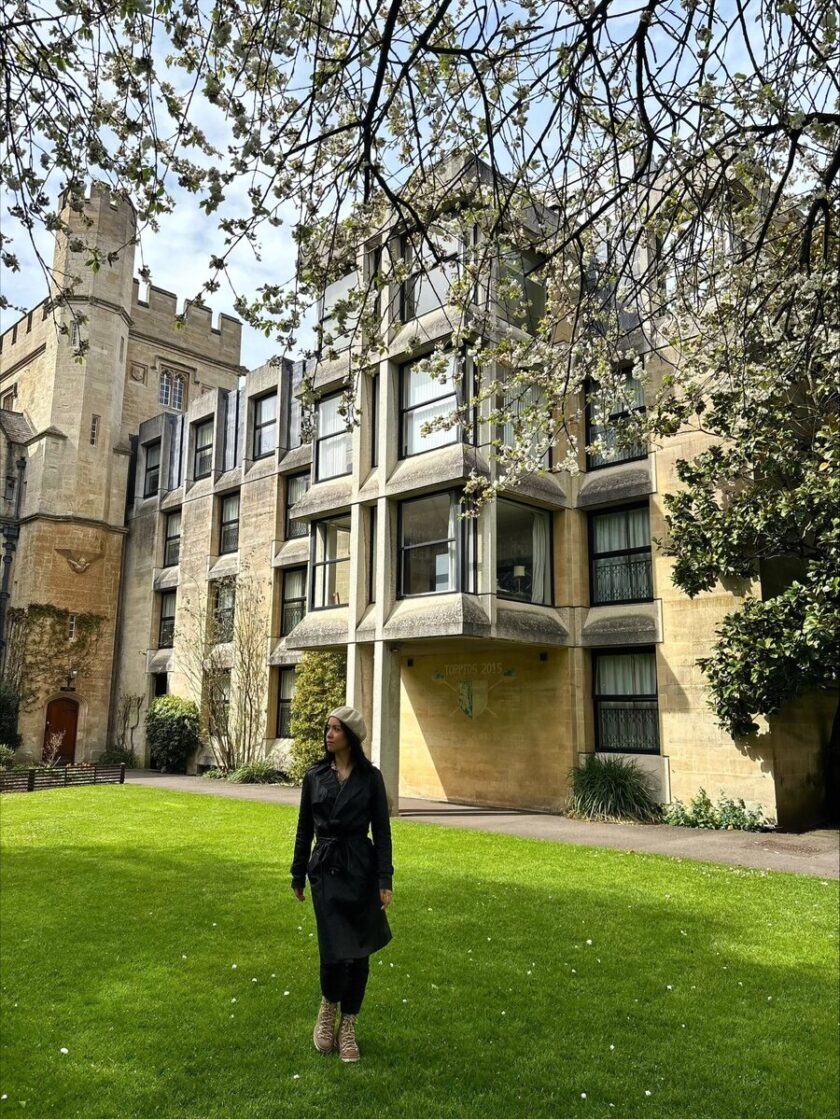
Founded in 1263, Balliol College is the oldest college in Oxford and the English-speaking world.
Take a walk through the college’s beautiful gardens, which are open to the public during certain times of the year. In spring you will find pretty cherry trees and an array of colourful flowers.
If you’re a fan of modern architecture, the Thomas White Building that belongs to St John’s College can be admired form the gardens of Balliol College. These modern student blocks contrast perfectly with the traditional oldie worldie architecture of Oxford.
Travelling on a budget?
Christ Church College is the most expensive college to enter at £20. It’s worth it if you have money to spare.
However, if you’re budgeting, save your money for the Bodleian Libraries (£10 – £20 depending on which tour you choose) and Magdalen College (£9.50) or Balliol College (£6).
Must-visit museums
Ashmolean Museum
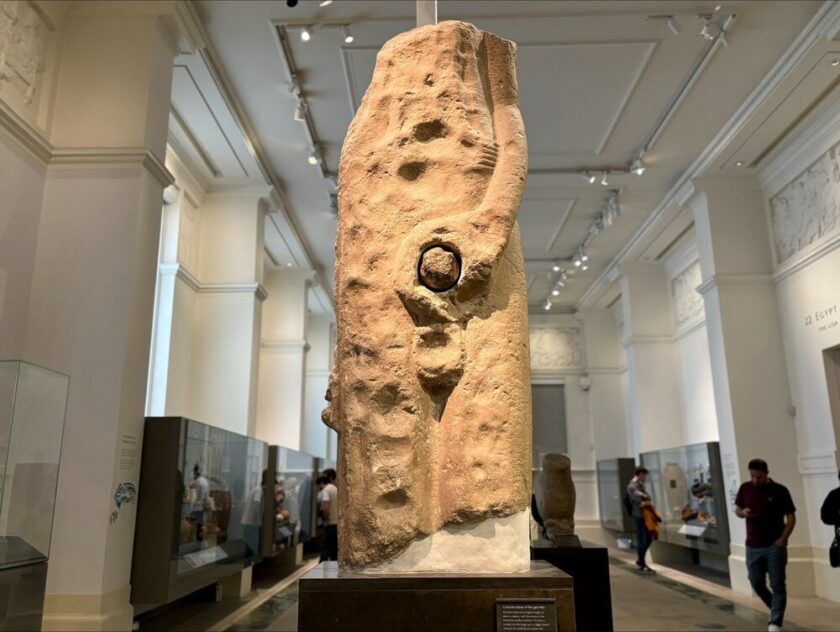
The collection at the Ashmolean is world-class. I think it might be my favourite museum in the whole of the UK because the artefacts are truly fascinating. Many also have a quirkiness that really make the whole collection sing. What I’m trying to say is the Ashmolean is far from boring.
It’s similar to the British Museum but on a smaller scale and arguably more tightly curated with incredible antiquities and art.
Every exhibit tells a colourful story of history from around the world dating back thousands of years. From ancient Egyptian artefacts to Greek and Roman sculptures, stepping inside, will transport you through ancient eras and into a world of creativity and ingenuity.
National History Museum & Pitt Rivers Museum
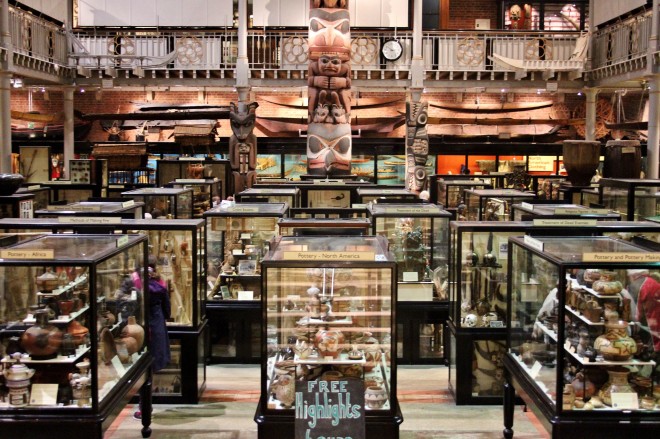
Although the National History Museum and the Pitt Rivers Museum are two separate museums, I’ve combined them both because the buildings are adjoined to each other.
The national History Museum is stunning – think of the one in London but on a smaller scale. It’s the perfect place to for families – full of wonder and an opportunity to learn about the natural world, past and present.
The Pitt Rivers Museum is super fascinating and quirky, best described as cabinet of curiosities. If you love learning about different cultures and traditional practices from the around the world, this is the museum for you.
Gargoyles and stone sculptures
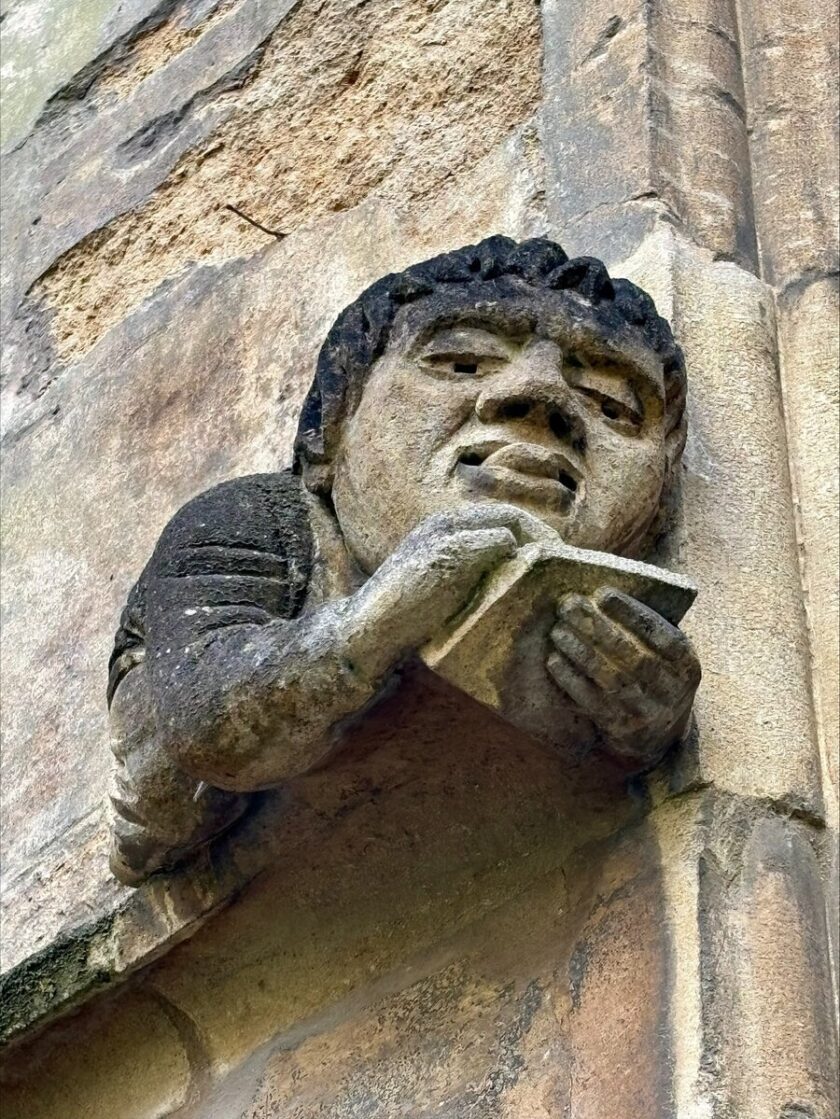
Make sure to look up when you’re wandering around Oxford, and you’ll find a whole circus of faces and figures adorning the buildings. They are literally everywhere but can be easily missed if you forget to look up.
There’s lot of symbolism to uncover, from quirky stone faces to grotesque gargoyles. If you’re looking for a silly game to play with yourself, count how many tongues you can spot. Not sure what the deal is, but someone enjoyed sculpting stone faces with their wee tongues sticking out. Call me childish, but I found them very amusing.
You’ll also find lots of pineapples – why pineapples? Well, these prickly fruits represented wealth – something that Oxford has in abundance.
As such, all around the UK, you’ll often see pineapples decorating the exterior of stately homes and prominent buildings. Nowadays the rich have Porsches, but it used to be all about the pineapples!
Thames walk
If the weather is nice, a walk along the Thames provides a scenic way to experience Oxford.
Living in the capital city, I naturally associate the River Thames with London. I was reminded that it spans the length of 215 miles / 346 kilometres and feeds through many towns and cities other than London.
Depending on how much time you have, you could just do a small section, or for those who want a long and satisfying ramble, you can embark on the Oxford Circular Walk.
Best Eats in Oxford: Cafes, Coffees & Restaurants

Just like the city’s international students, the same can be said for the restaurants. You will find many quintessential British Pubs, as well as restaurants specialising in cuisine from all around the world.
Breakfast at Vaults & Garden
While Vaults & Garden is known for serving up among the best Full English Breakfast in town, it’s prime location makes it extra popular.
Nestled in Radcliffe Square, you’ll be surrounded by stunning architecture as you relax and enjoy breakfast. If you take a seat outside, you’ll have St Mary’s Tower directly above and Radcliffe Camera directly opposite – now that’s a view!
Lunch at Chickpea
Even if you’re not a vegetarian, I recommend heading to Chickpea. They offer a range of moreish pitas stuffed with falafel, halloumi and salad.
If you’d rather avoid the carbs, I recommend getting the salad platter which is filled with all kinds of nutritious goodness! This place is very affordable but it definitely doesn’t compromise on taste and quality.
Dinner at Spiced Roots
My favourite restaurant hands-down is Spiced Roots. It specialises in Caribbean food with a modern twist. It was honestly one of the best meals I’ve ever had. You can check out the reviews for yourself. I’m not the only person waxing lyrical about the inspired food and cocktails – the flavours are sublime and the portions plentiful!
How to get to Oxford
I travelled from London and you can either get a bus or train.
The bus service from London Victoria takes 1 hr 30 mins Trains also run from Paddington and Marylebone stations and take 1 hr. If you book in advance you via the Trainline, you can find some good deals. I got mine for £15 return.
Additionally, from Birmingham it takes just over an hour by train.
Staying overnight: accommodation in Oxford
There’s a lot to see in Oxford so I recommend staying overnight if you can – make a weekend of it, or travel through the week.
By staying overnight, you’ll not only see more attractions, you’ll also get to experience the city at night.
The old-fashioned lamppost cast a beautiful warm yellow hue over all the cobbled streets and grand architecture. Then there is the absence of people which adds to the magic. Head to Radcliffe Square to see what I’m talking about.
Want to stay overnight? → Check hotels in Oxford




